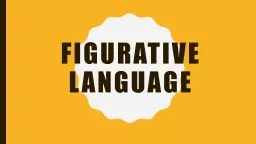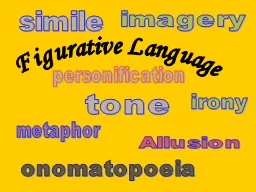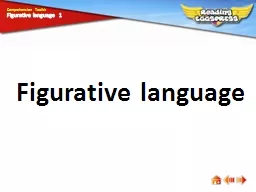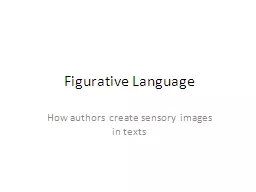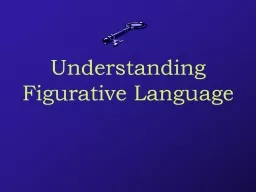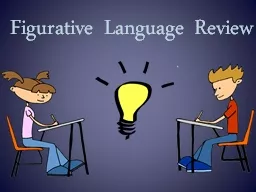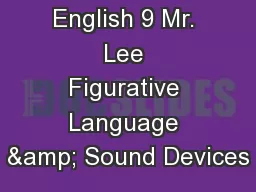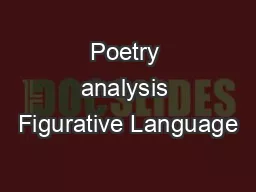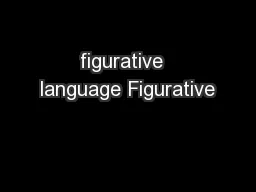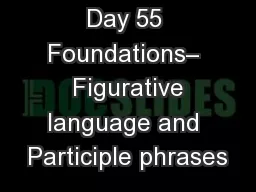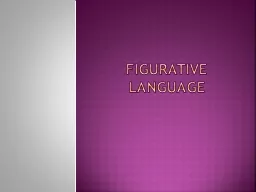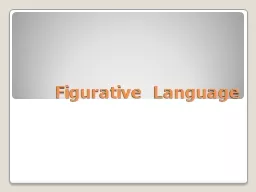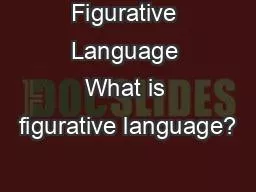PPT-Figurative Language Learning Goal:
Author : natalie | Published Date : 2021-12-20
I will be able to identify figurative languagesimile metaphor idiom personification onomatopoeia hyperbole alliteration consonance assonance within text Students
Presentation Embed Code
Download Presentation
Download Presentation The PPT/PDF document "Figurative Language Learning Goal:" is the property of its rightful owner. Permission is granted to download and print the materials on this website for personal, non-commercial use only, and to display it on your personal computer provided you do not modify the materials and that you retain all copyright notices contained in the materials. By downloading content from our website, you accept the terms of this agreement.
Figurative Language Learning Goal:: Transcript
Download Rules Of Document
"Figurative Language Learning Goal:"The content belongs to its owner. You may download and print it for personal use, without modification, and keep all copyright notices. By downloading, you agree to these terms.
Related Documents

